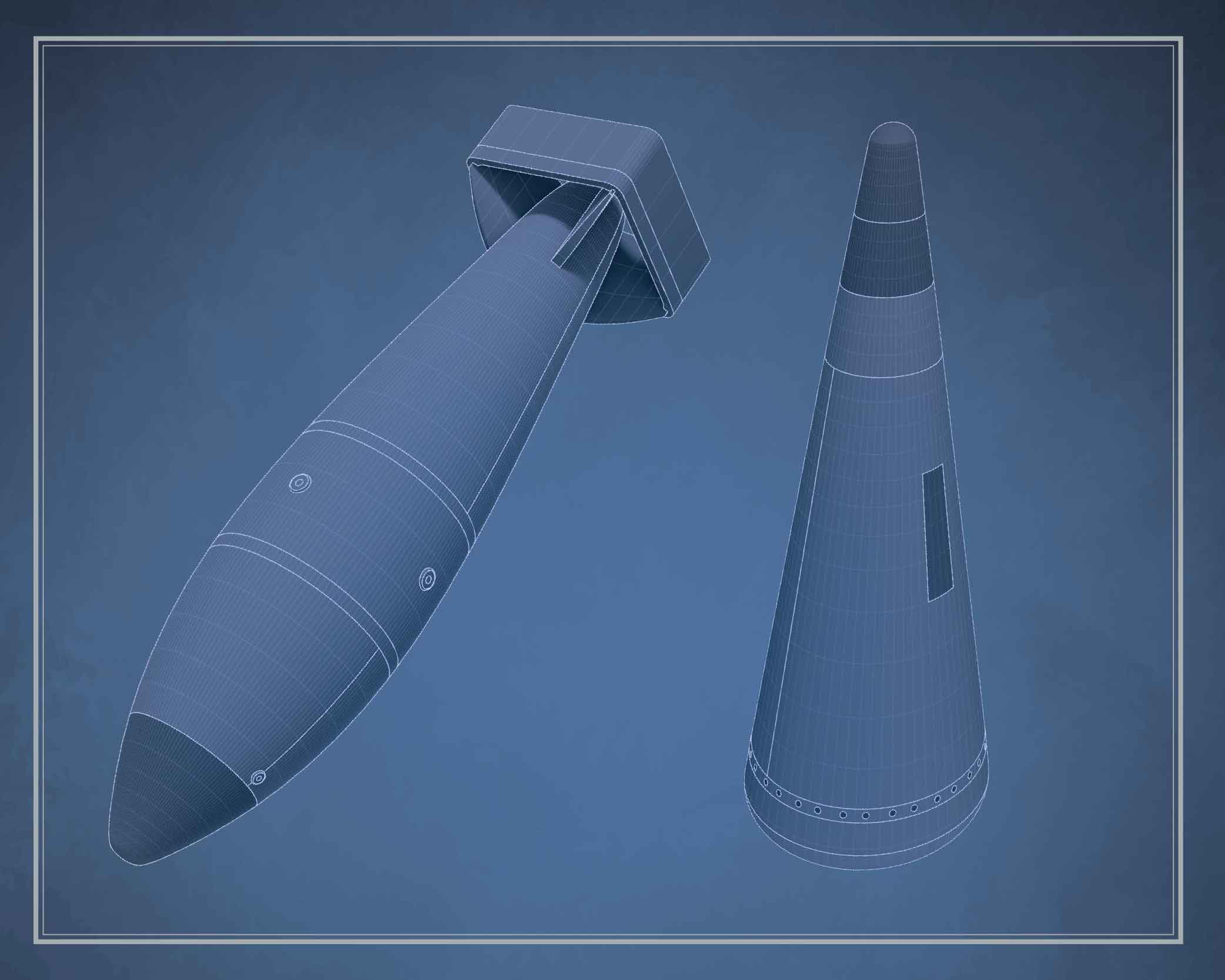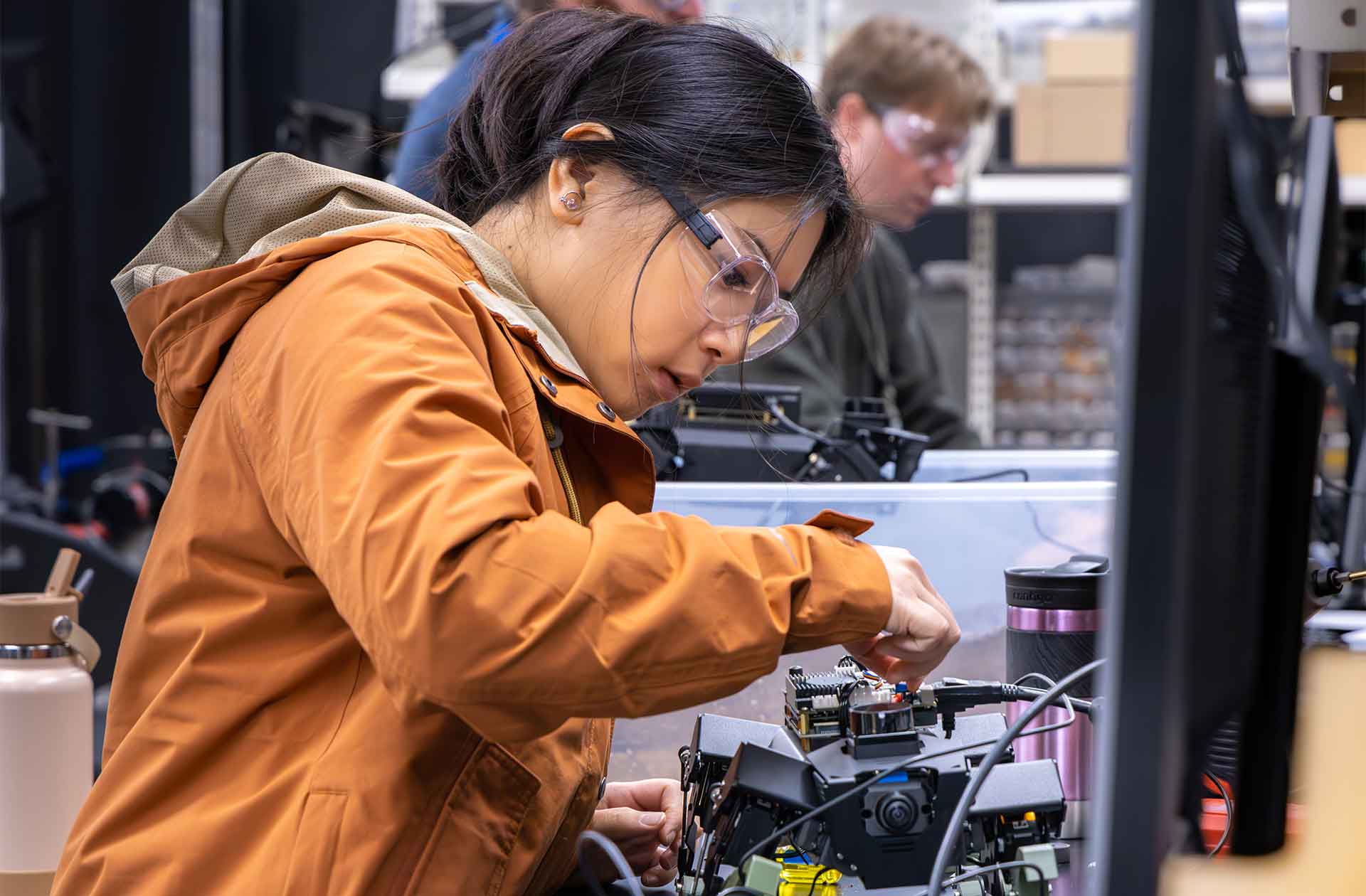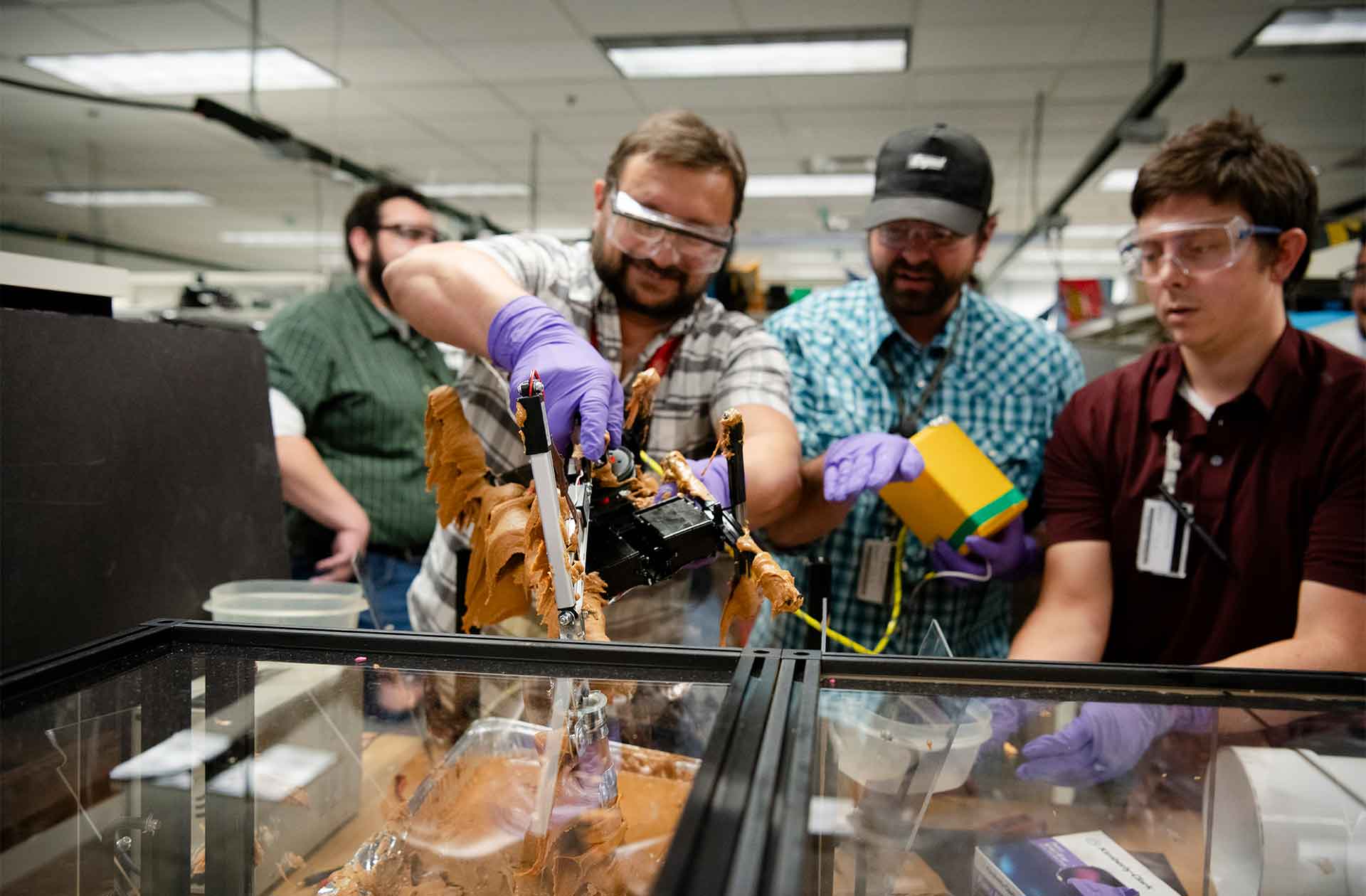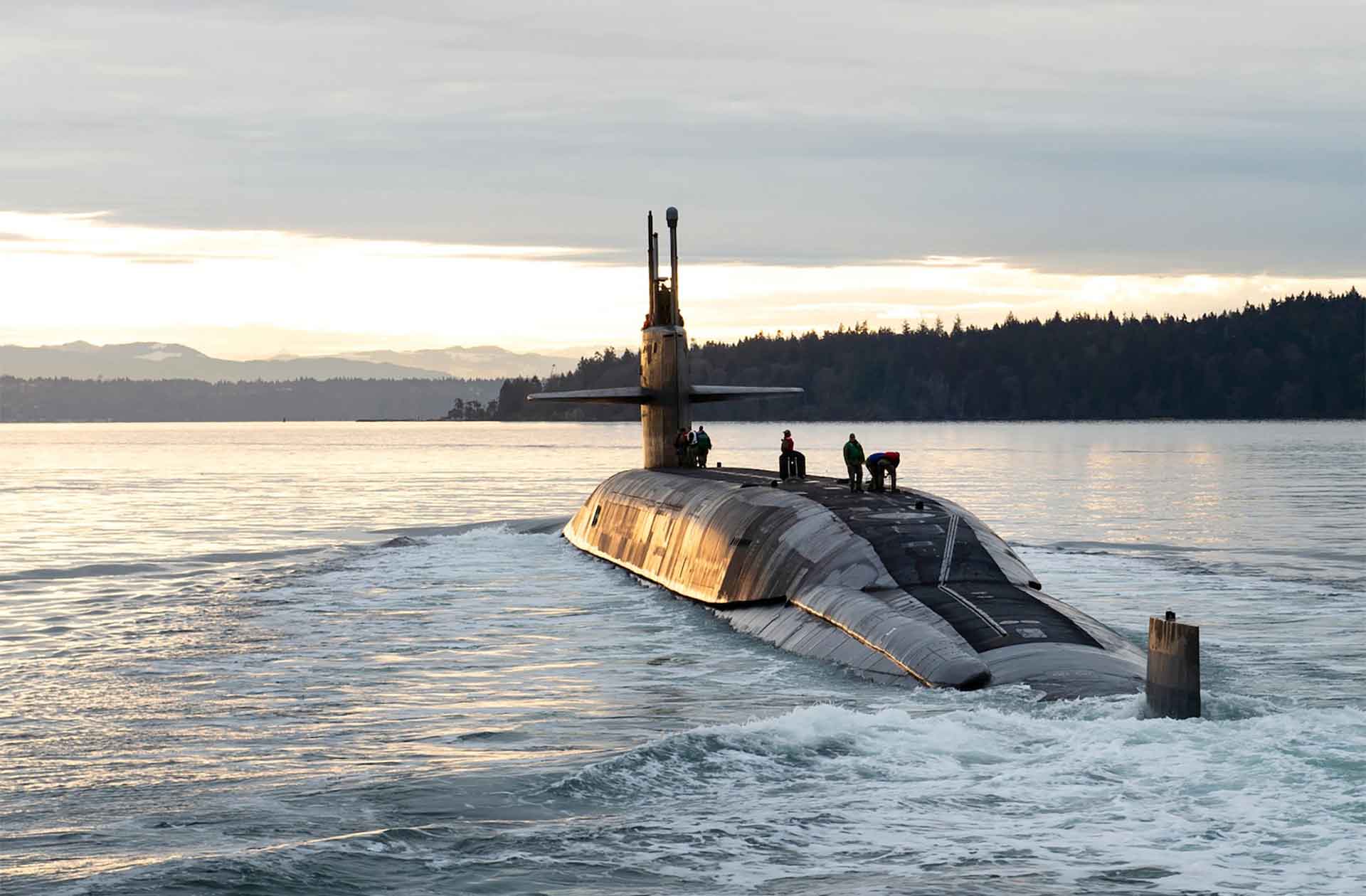The engineering issue
From the Manhattan Project to current efforts in maintaining and modernizing the U.S. nuclear arsenal, Los Alamos engineers play a vital role.
- Don Quintana, Associate Laboratory Director for Weapons Engineering (acting)

Earlier this year, National Security Science examined the national security applications of physics at Los Alamos National Laboratory. In this issue, we shift our focus to the critical role of engineering in national security. Physics and engineering are inherently interconnected—while physics provides the fundamental principles, engineering transforms these concepts into practical, real-world solutions.
Engineers have been integral to Los Alamos since the Laboratory’s founding in 1943. During the Manhattan Project, their expertise was essential in turning theoretical physics into a functioning atomic weapon, a groundbreaking effort that helped bring World War II to an end. Although the physics behind nuclear fission was well understood, the challenge lay in designing and constructing a deliverable weapon—an endeavor that required unparalleled engineering ingenuity. A glimpse into this historic effort can be found in this photo essay showcasing key engineering contributions to the Trinity test, the first detonation of a nuclear device on July 16, 1945.

As we enter July 2025, we mark not only the 80th anniversary of the Trinity test but also more than eight decades of engineering excellence at Los Alamos. Today, as one of three national laboratories responsible for the design, maintenance, and modernization of the United States’ nuclear arsenal, our primary focus in weapons engineering remains the safety, security, performance, and reliability of the nation’s nuclear deterrent. We rigorously assess the aging stockpile, predict its long-term performance, and address emerging challenges to ensure its effectiveness. Simultaneously, we look to the future—developing advanced weapon designs, improved components, and modernized delivery systems.
To maintain robust and cutting-edge defense capabilities, we collaborate closely with national labs (such as Sandia), production plants, and test sites across the nuclear security enterprise as well as with the Department of Defense and private defense contractors. This constant engagement ensures that our engineering solutions remain at the forefront of national security, ready to address both current and future threats.
As I embark on retirement after 28 years at Los Alamos, I’ve found myself reflecting on many experiences, challenges, and—most of all—my exceptional colleagues across the Weapons Engineering associate directorate and beyond. I hope this issue of National Security Science offers you a deeper appreciation for their dedication and expertise. Whether it’s environmental testing, tritium research, explosive testing, or other critical work, the Los Alamos team consistently rises to meet complex challenges, explores uncharted territory, and remains steadfast in its commitment to national security—today and for generations to come. It’s been the privilege of a lifetime to be part of this legacy. ★
Meet the new associate Laboratory director for Weapons Engineering, John Hill.
Download a PDF of the print issue, or browse the articles below.
ABSTRACTS
A new chief engineer
John Hill brings more than 40 years of experience to the job.
Engineering at Los Alamos
Key areas of expertise at the Laboratory.
Engineering in the national interest
Los Alamos and Sandia national laboratories collaborate to support nuclear security.
Full ahead for the W93
Los Alamos engineers help design a new warhead for submarine-launched ballistic missiles.
Elevating engineering
A leadership group strengthens and supports engineering across the Lab.
Peanut butter, potting soil, and prototype engineering
Los Alamos innovation sprints train engineers to solve critical challenges through hands-on creativity.
Built to blast
Los Alamos engineers put explosives to the test.
Uncommon knowledge
Nuclear facilities engineers prepare the Plutonium Facility for its national security mission.
Good vibrations
Los Alamos innovation delivers low-cost, cyber-resilient monitoring for industrial infrastructure.
Mining with amino acids
Los Alamos scientists aim to boost rare earth element supply through protein engineering.
Demonstrating Deimos
Los Alamos engineers advance next-generation reactor fuel.
Streamlining supercomputers
A Los Alamos–developed technology makes supercomputing faster and more efficient.
Mapping knowledge for machines
Ontology development at Los Alamos supports weapons research, artificial intelligence, and more.
A smarter, faster inspection
A new tool enhances speed and accuracy in national security manufacturing.
FEATURES
Engineering against the clock
Photos shed light on the monumental effort behind the Trinity test.
+ Engineers behind the Manhattan Project
Engineers making a difference
Meet 23 Laboratory engineers who support national security.
The Weapons Engineering Tritium Facility
Los Alamos researchers study the gas that powers nuclear weapons and the stars.
+ Till the cows come home: Brad Meyer works in support of national security.
Shake, rattle, and roll
Engineers put nuclear weapon components to the test.
+ Up, up, and away: Flight tests offer weapons performance insight.
ANALYSIS
Engineering partnerships
Evelyn Mullen helps build bridges between Los Alamos and the Texas A&M University System.
BEING ESSENTIAL
Fired up
Chemist Levi Lystrom has a passion for pottery.








